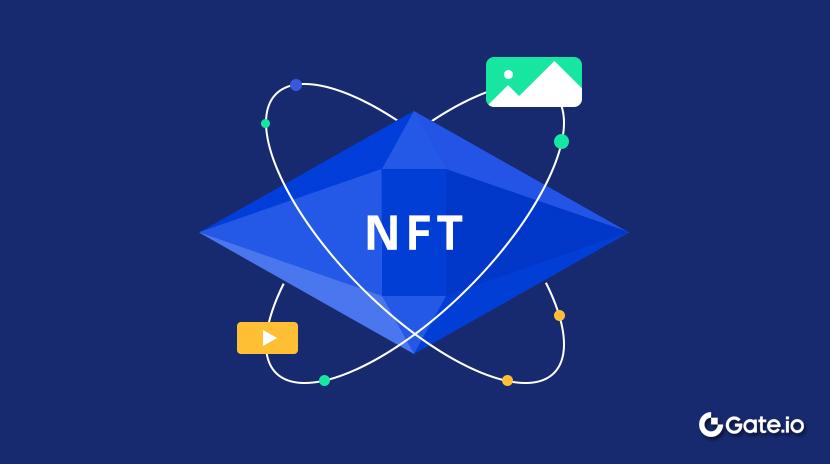nft prices

Non-Fungible Token (NFT) prices refer to the trading value of digital artworks, collectibles, and other unique digital assets in the cryptocurrency market. NFT prices are determined by a combination of factors including market supply and demand, creator reputation, scarcity, utility, and community recognition. Unlike traditional assets, NFT prices are characterized by extreme volatility, potentially experiencing multi-fold fluctuations within short periods. This price behavior reflects both the speculative nature of crypto markets and the evolving concept of digital ownership in the Web3 era.
What is the market impact of NFT prices?
NFT prices have profound and multidimensional impacts on the crypto market:
-
Market indicator function: Floor prices (lowest listed price) of premium NFT projects are often viewed as barometers of overall NFT market health, with blue-chip NFTs like CryptoPunks or Bored Ape Yacht Club price trends frequently leading the entire market.
-
Capital flow catalyst: Periods of surging NFT prices typically attract large influxes of speculative capital, fostering development in related infrastructure, marketplaces, and creative tools.
-
Brand entry signals: Established brands and institutions typically enter the market when NFT prices stabilize and market maturity improves, which in turn further drives up prices and market size.
-
Ecosystem correlation: NFT price movements demonstrate correlation with their underlying blockchain tokens (such as Ethereum or Solana), with high-value NFTs often increasing network activity and value capture.
-
Creator economy indicators: NFT prices directly impact creator income, with high-selling projects establishing new value benchmarks for digital creators and reshaping the economic model for content creation.
What are the risks and challenges of NFT prices?
NFT prices face multiple risks and challenges that investors and market participants should carefully evaluate:
-
Extreme volatility: NFT prices can experience downturns exceeding 90% in short periods, far surpassing traditional asset classes, making value assessment extremely difficult.
-
Liquidity traps: Most NFTs lack sufficient secondary market liquidity, potentially leaving high-priced NFT purchasers with no exit options.
-
Value bubble risk: Many NFT project price increases rely primarily on speculative psychology rather than actual utility, creating significant bubble burst risks when market sentiment reverses.
-
Manipulation and wash trading: Some NFT prices may be influenced by insider trading or self-dealing market manipulation activities that create artificial price increases.
-
Lack of valuation standards: Unlike mature financial markets, NFTs lack standardized valuation methods, making objective intrinsic value assessment challenging.
-
Copyright and legal risks: Some high-priced NFTs may face copyright disputes or infringement issues, with these legal risks potentially reducing asset value to zero.
Future Outlook: What's next for NFT prices?
NFT pricing mechanisms and market dynamics are undergoing significant evolution, with several emerging trends on the horizon:
-
Price divergence: The market will more clearly differentiate between utility-driven NFTs and pure art/collectible NFTs, with increasingly distinct price determinants and volatility patterns for each.
-
Maturation of valuation models: As the market develops, more scientific NFT pricing models will emerge, incorporating multidimensional factors including historical data, community metrics, and utility analysis.
-
Price stabilization mechanisms: NFTs linked to physical assets, fractional ownership, and rental models may provide stronger stability supports for prices.
-
On-chain pricing feedback: Smart contracts will more tightly integrate on-chain activity data with NFT prices, creating more transparent and responsive dynamic pricing systems.
-
Cross-chain price discovery: As cross-chain protocols develop, NFT prices will achieve value unification and discovery across different blockchain networks, forming a broader global market.
-
Utility premiums: Future NFTs related to practical application scenarios such as gaming experiences, metaverse assets, and identity verification may obtain sustained price premiums.
The long-term value of NFT prices will increasingly depend on their ability to transcend purely speculative attributes and evolve into truly functional digital assets.
Understanding NFT prices is crucial for crypto asset investors and digital creators. NFT prices represent more than just tags on digital items; they embody the core manifestation of the digital ownership revolution. As the market matures, NFT prices will gradually form more reasonable assessment systems that better reflect intrinsic value, while the price discovery process will integrate more on-chain data, community value, and utility function evaluation. Investors should look beyond short-term price speculation and focus on the long-term value propositions of NFTs to make informed decisions in this emerging market.
Related Articles

Top 10 NFT Data Platforms Overview

7 Analysis Tools for Understanding NFTs
